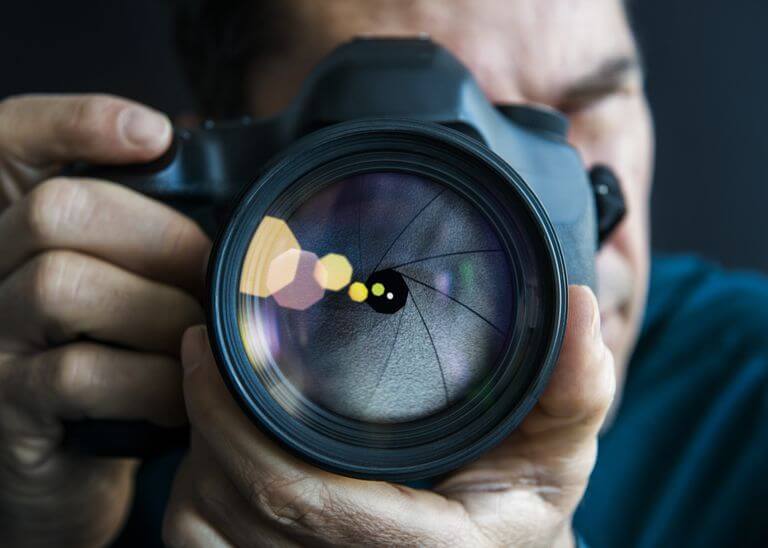What is Aperture?
Aperture is a hole within a lens, through which light travels into the camera body. Aperture is perhaps the single most important camera setting that every photographer must know It helps to have a good mental concept of aperture blades in the first place.
Yes, aperture blades.
Take a look inside your camera lens.
If you see properly in the lens, you’ll see something that looks like this:
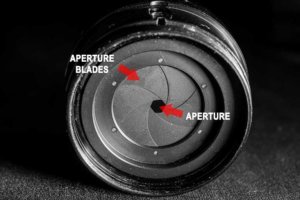
Aperture
The blades form a small hole, almost circular in shape is your aperture.
They also can open and close, changing the size of the aperture.
Aperture, it affects the amount of light that reaches your camera sensor.
Human Eye as Aperture
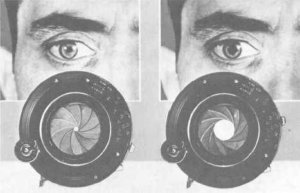
Human Eye Working As Aperture
The aperture is the hole inside your lens, which acts as the ‘iris’ similar to your eyes.As you move between bright and dark environments, the iris in your eyes either expands or shrinks, controlling the size of your pupil. In photography, the “pupil” of your lens is called your aperture. You can shrink or enlarge the size of the aperture to allow more or less light to reach your camera sensor.
Aperture Affecting DoF
Aperture effects the DoF ( Depth Of Field ) which shows the amount of your photo that appears to be sharp in front to back.
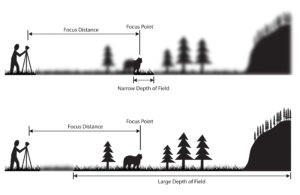
Adjusting your aperture is one of the best tools you have to capture the right images.
You can adjust it by entering your camera’s aperture-priority mode or manual mode, both of which give you free rein to pick whatever aperture you like.
What is F-stop ?
Aperture is denoted by f/stops.
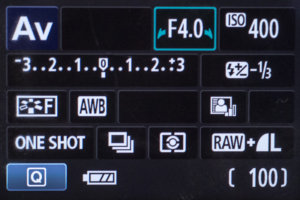
F- Stop
F- stop is one of the most important parts about aperture and it is written in fraction. You might have seen this in your camera before. On your camera’s LCD screen or viewfinder, the f-stop looks like this: f/1.8, f/3.5, f/5.6, f/8, f/16, and so on. Sometimes, it will simply be shown like this: f1.8, f3.5, f5.6, f8, f16, and so on.
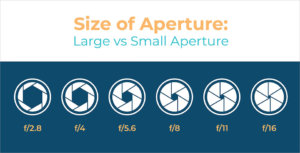
A large aperture opening — something like f/2 — will let a ton of light pass through your camera lens and get captured by your sensor.
A small aperture opening — something like f/16 — will block most of the light passing through your lens, resulting in a photo that is much darker.
Here’s an example to represent how aperture size changes exposure:
What is Aperture Scale ?
| f/1.4 | f/2.0 | f/2.8 | f/4.0 | f/5.6 | f/8.0 | f/11.0 | f/16.0 | f/22.0 |
|---|---|---|---|---|---|---|---|---|
| Very large aperture | Large aperture | Large aperture | Moderate aperture | Moderate aperture | Moderate aperture | Small aperture | Small aperture | Very small aperture |
| Lets in a huge amount of light | Half as much light | Half as much light | Half as much light | Half as much light (a very “medium” aperture) | Half as much light | Half as much light | Half as much light | Half as much light (by which point your photos are very dark) |
| Very thin depth of field | Thin depth of field | Thin depth of field | Moderately thin depth of field | Moderate depth of field | Moderately large depth of field | Large depth of field | Large depth of field | Very large depth of field |
Conclusion
Hopefully, you now have a good sense of aperture and the ways it affects your photos.
Aperture is a hole in your lens that lets light pass through.
F-stops ( f-numbers) are the numbers that you’ll actually see on your camera or lens as you adjust the size of your aperture
A small aperture means that the aperture blades in your lens are closed quite and a large aperture means that the blades have a very wide opening.
Since f-stops are fractions, an aperture of f/2 is much larger than an aperture of f/16
Just like the pupil in your eye, a large aperture lets in a lot of light. If it’s dark out, and you don’t have a tripod, you’ll want to use a large aperture .
Aperture also affects the depth of field in a photo — how much of the image appears to be in focus.
Large apertures like f/1.8 have a very thin depth of field.
Landscape photographers prefer using smaller apertures, like f/8, f/11, or f/16, to capture both the foreground and background of a scene as sharp as possible at the same time There are other effects of aperture, too, but exposure and depth of field are generally the most important.
That’s it guys for today you’ve got the basics of aperture and F-stop.
Keep Snapping.
